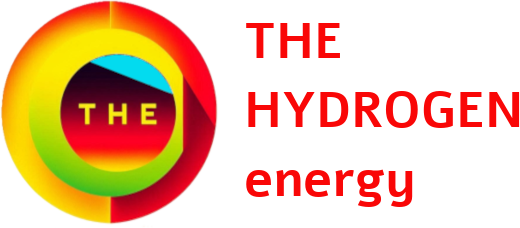Fundamentals of Hydrogen Safety, Hydrogen Fire Detection, Hazards, Sensors, Standards, Protocols, Precautions, Best Practices, and Latest Research
Understanding hydrogen safety, hydrogen fire detection systems, hazards, dangers, sensors, standards, best practices, and the latest research is crucial as hydrogen (H₂) emerges as a leading clean energy source. Whether in its gaseous, liquid, or hydrogen derivative compound form, hydrogen plays a pivotal role in decarbonizing key sectors like energy and transportation but comes with distinct safety challenges. Its unique properties, such as high flammability, wide explosive range, and low ignition energy, demand a cautious and well-informed approach to handling. Ensuring the highest safety standards and efficient utilization of hydrogen as an energy carrier is vital for advancing the hydrogen economy. At normal room temperatures and conditions, hydrogen’s flammability and explosive characteristics require rigorous safety measures across all applications.
This article aims to provide a comprehensive understanding of hydrogen safety, hydrogen Fire covering hazards, mitigation strategies, focusing on detection technologies, best practices, research advancements, regulatory standards, and essential equipments relevant to hydrogen safety.
I. Common Hydrogen Safety Hazards: The Science Behind the Risks
- High thermal hazard: Hydrogen flames due to their exceptionally high temperatures, ranging from 1500-2200 K (1227 – 1927 °C or 2240 to 3500 °F) in practical scenarios. These high temperatures present significant risks that demand careful consideration during the design, operation, and maintenance of hydrogen systems. The management of this high thermal hazard is essential for ensuring the safe utilization of hydrogen as a clean energy carrier.
- Flammability and Explosiveness:
- Invisible Flames: Hydrogen flames are nearly colorless and can be difficult to detect visually, increasing the risk of burns or other injuries during a fire incident. Read more on Hydrogen flames, color, visibility
- Wide Flammability Range: Hydrogen has an exceptionally broad flammability range in air (4% to 75% by volume). This means that a concentration of just 4% hydrogen in air is enough for ignition. Thus even relatively small leaks can result in a flammable mixture. Upper Flammability Limit (UFL): 75% (by volume) in air. This very wide range highlights the danger of both very lean and very rich mixtures in confined areas.
- Low Minimum Ignition Energy (MIE): Hydrogen requires a very low energy spark to ignite (around 0.02 mJ), making it prone to ignition from static electricity or hot surfaces. For comparison, gasoline has an MIE around 0.2 mJ, making hydrogen roughly ten times easier to ignite with a spark or hot surface.
- Static Electricity can ignite hydrogen gas if proper precautions are not taken. For example, static discharges may occur during filling operations or when handling equipment, especially in dry conditions.
- Laminar Flame Speed or Laminar Burning Velocity (LBV): In air, laminar flame speeds for hydrogen can reach up to 3 m/s, significantly faster than other common fuels such as Methane and Gasoline air mixture (at STP) ranges between 0.35 – 0.45 m/s
- Detonation Velocity: Hydrogen detonations can propagate at speeds ranging from 1500-2000 m/s in confined spaces, generating shock waves with very high pressures.
- High Flame Speed: Once ignited, hydrogen flames can propagate very quickly, leading to rapid deflagrations or even detonations under confined conditions. (Deflagration: Subsonic Combustion, a deflagration is a type of combustion where the flame front (the leading edge of the burning zone) propagates through the unburned mixture at a subsonic speed. In simpler terms, the flame moves slower than the speed of sound in the surrounding medium. Think of it like a regular fire – it burns and spreads, but not with explosive force.)
- Detonation Potential: Under specific conditions (e.g., high concentrations in confined spaces), a deflagration can transition to a detonation, a supersonic combustion wave with destructive force. This is particularly a concern in enclosed areas and pipelines.
- Deflagration to Detonation Transition (DDT): Research is ongoing to study the factors influencing DDT, like the geometry of obstacles and confinement, mixture composition, and ignition source to create reliable risk prediction models.
- Flame Acceleration: Studies have shown that flame acceleration in hydrogen is significantly increased by confinement and the presence of obstacles. Flame speed can easily reach sonic speeds.
- Combustion Chemistry
- The hydrogen combustion reaction with oxygen is highly exothermic: 2H₂ + O₂ → 2H₂O. This reaction releases significant heat and energy.
- Chain branching reactions (e.g., H + O₂ → OH + O) are crucial in its rapid burning velocity.
- Flame speed depends on temperature, pressure, and fuel concentration.
- Invisibility and Odorlessness:
- Pure hydrogen is odorless, colorless, and tasteless, making it impossible to detect by human senses, which emphasizes the importance of leak detection.
- In industrial applications, odorants are sometimes added to hydrogen (e.g. Ethyl mercaptan) to aid in detection, however, this is not universally practiced especially in fuel cell applications where purity is critical. However, when it comes to hydrogen, odorants are not currently used. The challenge lies in finding odorants that are light enough to disperse or travel along with hydrogen at the same rate.
- Buoyancy and Diffusion:
- High Buoyancy: Hydrogen is one of the lightest gases. It rises rapidly when released into the atmosphere. While this helps dispersion, it can also lead to accumulation under ceilings and in elevated pockets in enclosed areas.
- High Diffusivity: Hydrogen diffuses rapidly, making it challenging to contain leaks and requiring tight seals to prevent permeation. Hydrogen Diffusion coefficient in air is 0.61 cm²/s (compared to methane at 0.16 cm²/s). Hydrogen’s permeability through steel: 10⁻⁶ mol/m/s/Pa at 300 K.
- Hydrogen Leaks: As Hydrogen is highly diffusible, can escape through small openings, leading to potential accumulation in confined spaces. This increases the risk of creating explosive mixtures with air.
- Hydrogen Embrittlement:
- Mechanism: Hydrogen atoms can diffuse into the metal structure of materials (especially certain steels and alloys), leading to the formation of hydrides and increased brittleness and loss of tensile strength and fracture toughness.
- Reduction in tensile strength: ~20–30% in steels after hydrogen exposure.
- Crack propagation rates in metals: Increase by 100x in hydrogen-saturated environments.
- Consequences: This can lead to fatigue and structural failures in pipelines, storage tanks, and equipment exposed to hydrogen. This effect can be particularly pronounced at high-pressure and low-temperature environments.
- The mechanism behind is, absorbed hydrogen accumulates at grain boundaries, which leads to crack initiation and propagation under stress.
- Research is done to create alloys which resists embrittlement.
- Asphyxiation: In confined spaces, hydrogen can displace oxygen, posing asphyxiation risks to personnel working in those areas.
- Cryogenic Handling (Liquid Hydrogen LH2):
- Extremely Low Temperatures: Liquid hydrogen is stored at -253°C. This poses the risk of frostbite and material property changes if not handled properly.
- Boil-Off: Due to heat transfer, liquid hydrogen boils off and releases large volumes of gaseous hydrogen that can be a potential safety hazard.
- Cryogenic Embrittlement: Some materials become brittle at very low temperatures, requiring specific materials selection.
- Air Liquification: If cryogenic hydrogen contacts air, it can condense and liquefy the air. This can increase fire risk as liquid oxygen is an oxidizer.
II. Hydrogen Safety, Hydrogen Fire Mitigation Strategies: Engineering and Scientific Solutions & Controlling the Risks
- Engineering Controls:
- Leak-Tight Systems: Design and construction should aim for leak-free joints, seals, and connections. Regular inspections are critical.
- Proper Ventilation: Adequate natural or mechanical ventilation systems are critical to prevent the accumulation of hydrogen in confined or semi-confined areas. The design should consider the buoyancy of hydrogen for efficient dispersion.
- Pressure Relief Devices: Pressure relief valves (PRVs) and rupture disks are essential to prevent over-pressurization. These devices should vent hydrogen safely away from personnel and equipment.
- Explosion Vents: Install explosion vents in areas where hydrogen is stored or used to safely redirect flames away from personnel and critical equipment.
- Material Selection: Use materials resistant to hydrogen embrittlement for all equipment, especially those exposed to high-pressure or cryogenic conditions. For example, austenitic stainless steels, aluminum alloys, and specific polymers are common selections.
- Materials and Coatings :
- Hydrogen-Resistant Alloys: Examples: Inconel 718, austenitic stainless steels (316L, 304L).
- Multi-layer thin-film coatings of TiN and Al₂O₃ reduce permeation rates by ~60%.
- Polymeric Liners: High-density polyethylene (HDPE) liners for tanks reduce hydrogen diffusion by ~95%.
- Double Containment: In pipelines and storage facilities, double containment systems with leak detection are often used to minimize risks.
- Flame Arrestors: Flame arrestors are employed to prevent flame propagation through pipelines or equipment, especially in the presence of flammable mixtures.
- Operational Controls:
- Standard Operating Procedures (SOPs): Well-defined procedures for handling hydrogen, including start-up, normal operation, and shutdown, are important.
- Training: Personnel must be trained in hydrogen safety, hazard awareness, and emergency procedures.
- Permit-to-Work Systems: Implement permit systems to control access to hydrogen handling areas and equipment.
- Regular Inspections and Maintenance: Conduct routine inspections of equipment, including detectors, valves, and pressure relief systems.
- Risk Assessments: Conduct periodic risk assessments to identify potential hazards and implement mitigation measures.
- Emergency Preparedness:
- Emergency Shutdown Systems: Emergency shutdown systems must be in place to rapidly isolate the hydrogen source in the event of a leak or fire.
- Fire Suppression Systems: Fire suppression systems using dry chemicals or other appropriate agents should be strategically placed. Hydrogen fires often require special techniques and precautions.
- Emergency Response Plans: Have well-defined emergency plans that are tested and regularly updated. Emergency responders need to be trained in responding to hydrogen incidents.
III. Hydrogen Gas Detection Technologies: The Frontline of Safety
The following technologies are crucial for hydrogen safety, hydrogen fire prevention and mitigation:
- Point Sensors:
- Catalytic Bead Sensors: These sensors work by measuring the heat generated by hydrogen combustion on a catalytic surface. They are reliable but can be poisoned by certain contaminants.
- Electrochemical Sensors: Electrochemical sensors measure the change in current or voltage as hydrogen reacts with the sensor’s electrolyte. They are often used for low concentration measurements and are less prone to poisoning than catalytic bead sensors.
- Metal Oxide Semiconductor (MOS) Sensors: These sensors detect changes in resistance due to hydrogen adsorption onto the semiconductor surface. They are cost-effective, but can have slower response times and may exhibit cross-sensitivity to other gases.
- Thermal Conductivity Sensors: These sensors measure the changes in the thermal conductivity of the gas mixture. They are highly versatile, robust and can measure wide range of concentrations, but may be affected by ambient temperature changes.
- Advanced Optical Sensors: (Both Point & Open-Path) High Sensitivity and Multi-Gas Detection
- Advanced Detection Technologies:
- Infrared (IR) Sensors: IR sensors detect the absorption of specific wavelengths of IR light by hydrogen. They offer fast response times, are not poisoned by contaminants, and can be used for both point and open-path detection.
- Laser-Based Sensors: Laser-based sensors, such as Tunable Diode Laser Absorption Spectroscopy (TDLAS), offer high selectivity and sensitivity, enabling detection of even minute leaks.
- Ultrasonic Sensors: Ultrasonic sensors detect leaks by measuring the high-frequency sound emitted by escaping gas. They are particularly useful for detecting high-pressure leaks and are not affected by ambient air.
- Acoustic Emission (AE) Sensors: Acoustic emission sensors detect high-frequency elastic waves generated by the cracking of materials or high speed gas release under stress, which can provide early warning signs of material failure related to hydrogen embrittlement.
- Quantum Sensing: Leveraging quantum physics for high-precision hydrogen detection is an active area of research. Quantum sensors promise improved sensitivity, selectivity, and response time.
- Gas Chromatography and Mass Spectrometry: While not real-time detection, these methods are used for highly accurate gas analysis to measure the presence of hydrogen and impurities to ensure quality of hydrogen.
- Optical Fiber Sensors: Hydrogen alters the refractive index of fiber coatings.
- High spatial resolution allows pinpointing leaks within meters.
- Wireless Sensors and IoT:
- Wireless sensor networks and IoT (Internet of Things) platforms are now being implemented for real-time monitoring of hydrogen systems. These enable remote monitoring and early detection of leaks, improving safety and reducing response time.
IV. Hydrogen Safety, Hydrogen Fire Prevention, Ongoing Research and Latest Advancements:
- Advanced Materials:
- Hydrogen-Resistant Alloys: Significant research is being conducted to develop alloys and composites with better hydrogen embrittlement resistance. This includes high-entropy alloys, advanced steels, and novel coatings.
- Polymeric Materials: Developing novel polymer composites that are impermeable to hydrogen and do not degrade over time in hydrogen service, is critical for seals and gaskets.
- Permeation Reduction: Graphene-based barriers can achieve up to a 99.9% reduction in hydrogen permeation compared to conventional materials like polymers or metals.
- Computational Fluid Dynamics (CFD) Simulations:
- CFD simulations are used extensively to model hydrogen dispersion patterns, flammability zones, and explosion dynamics. These simulations provide valuable insights for designing safer hydrogen systems, including the optimal placement of detectors and ventilation.
- Artificial Intelligence and Machine Learning:
- AI and ML algorithms are being developed for data analysis of sensor data and for predictive maintenance of equipment. These can also help to optimize detection systems to adapt to changing environments and detect subtle leak patterns.
- Advanced Spectroscopy for Leak Detection:
- Various advanced spectroscopic methods are actively explored, such as Cavity Ring Down Spectroscopy (CRDS) and Frequency Combs, which provides higher sensitivity and specificity for trace detection and monitoring of hydrogen.
- Research on Deflagration and Detonation:
- Research is on going to better understand the transition of deflagration to detonation, so that effective design and safety strategies can be developed.
- Standardization and Regulations:
- Organizations worldwide are actively working on updated standards for hydrogen safety, which include sensor standards, equipment standards, and operation standards. ISO, CSA, SAE, ASTM, and IEC standards bodies are all involved in various areas of hydrogen safety.
V. Hydrogen Safety, Hydrogen Fire Detection, Sensors, Standards, Practices, Latest Research: Conclusion
Hydrogen, as a clean energy carrier, holds great potential, but its safe use requires meticulous attention to detail. The safe handling of hydrogen requires a proactive approach that combines engineering controls, standards, material science, rigorous training, and consistent maintenance practices. By understanding the common hazards associated with hydrogen and implementing effective mitigation strategies, industries can harness the benefits of hydrogen while minimizing risks to personnel and infrastructure.
This content is protected by copyright and cannot be reused without permission. For collaboration inquiries or to request content usage rights, please get in touch with us: info@thehydrogen.energy







Add comment